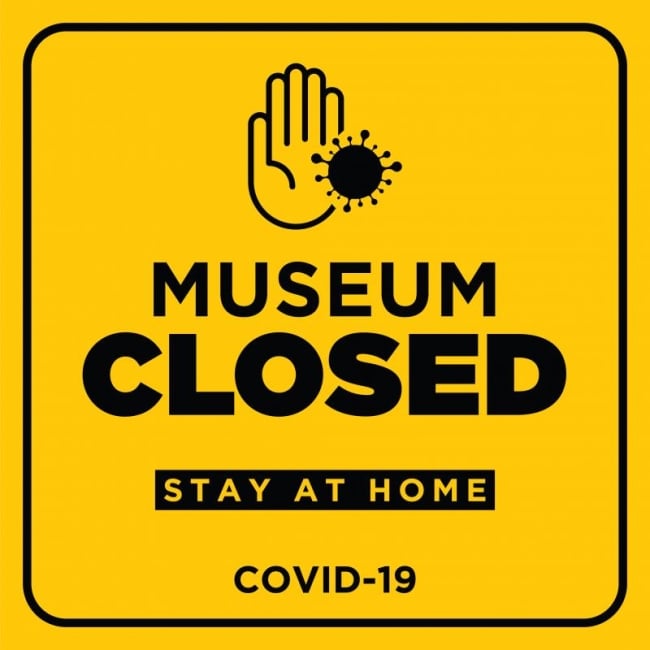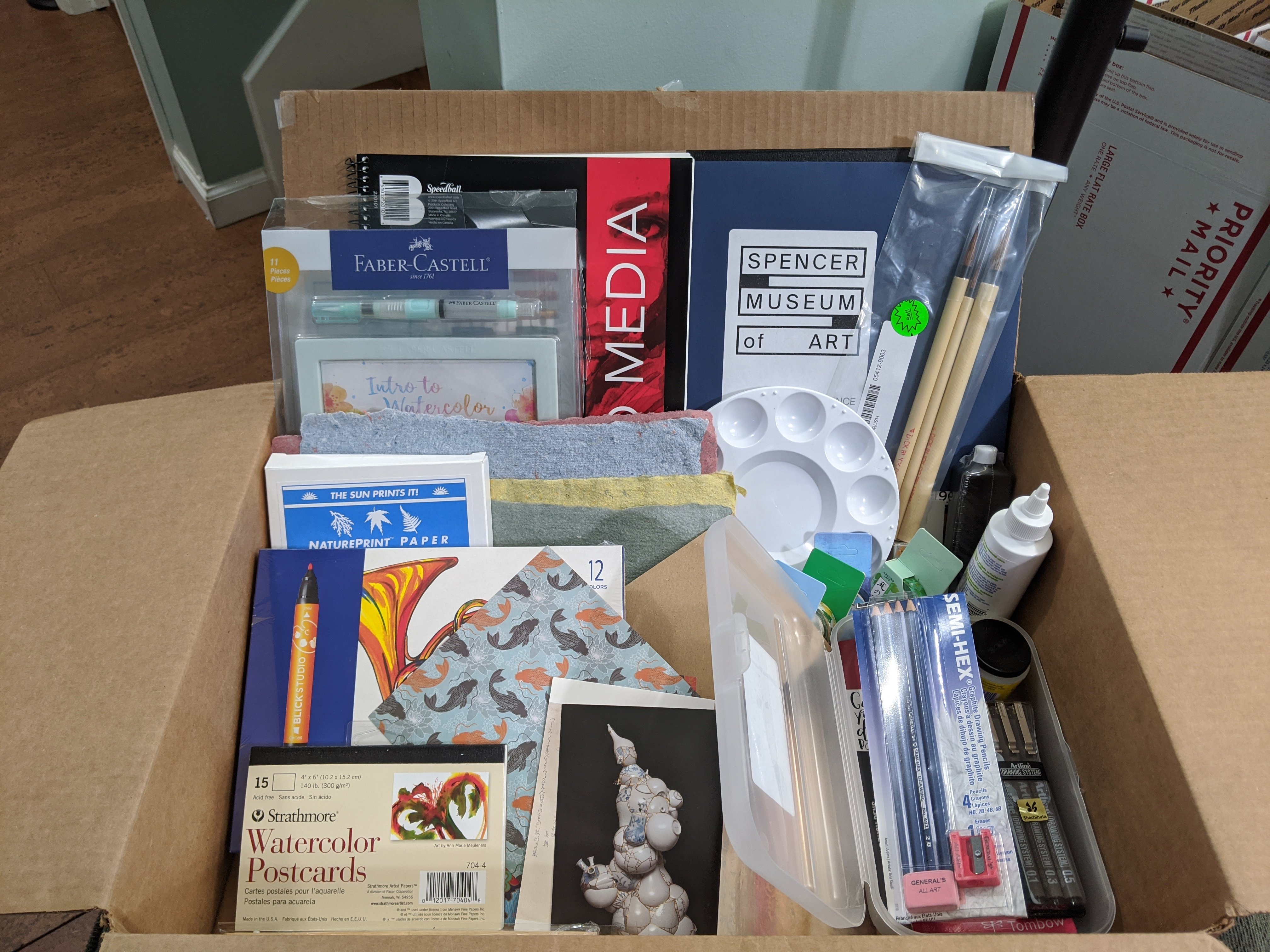You have /5 articles left.
Sign up for a free account or log in.

ISTOCKPHOTO.COM/KaanC
University-owned museums are feeling the effects of the coronavirus pandemic in different ways. Like most other units of their universities, they're closed to the public, having moved their programming online. And like most everyone else in academe, museum staff are planning for lots of different reopening scenarios and waiting to see what comes next.
“Internally, I think a lot of museum directors are worried about their staff -- are they going to get furloughed, when are universities and colleges going to open up, when can they bring back all the staff or will it just be some of the more essential staff,” said John Versluis, the president of the Association of Academic Museums and Galleries and dean of the Texas Heritage Museum at Texas Hill College.
“I think everybody’s just scared,” Versluis continued. “Museums at some institutions are probably low-hanging fruit.”
The hundreds of museums based at colleges and universities vary greatly in terms of their size, their positioning within their parent college or university and their revenue models. Some museums are free to the public, while others charge admission fees, making them vulnerable to loss of revenue from ticket sales as long as they are closed. Academic museums generally rely on some combination of ticket sales and other earned income, fundraising contributions, endowment interest, and direct support from the parent university or (in the case of museums based at public universities) the state government.
The Bell Museum, a natural history museum located on the University of Minnesota's Twin Cities campus, raises more than 70 percent of its revenue from sources outside the university, according to the Bell’s executive director, Denise Young. Young said the museum is projecting an earned income loss of $609,000 between the day it closed due to the pandemic, March 13, and the last day of the fiscal year, June 30. The $609,000 shortfall comes in the context of an $8.8 million annual budget.
“It’s a combination of lost revenue from walk-in attendance and ticket sales for the museum and the planetarium,” Young said. “It includes lost revenue from field trips. We serve 30,000-plus K-12 schoolchildren each year, and so not having that revenue is significant, especially in the busiest time for school field trips, which is the spring. It includes lost revenue from event and facilities rentals and a variety of other programs. We had a big Girl Scout program that we had to cancel. We do some outreach where we take materials and programs to schools, and those got canceled as well. It’s just a variety of losses -- retail as well; we have a gift shop.”
Other university museums that are less dependent on earned revenue are seeing significant reductions in fundraising or projecting losses from canceled or postponed fundraising events. "Where we’re really seeing an impact is in contributions," said Amy Gilman, director of the Chazen Museum of Art, which is based at the University of Wisconsin at Madison campus. "Donations to the museum have obviously fallen dramatically. The real question for me and across the whole nonprofit sector is when are they going to start rising again and will people contribute to museums in a time of a global public health crisis."
Perhaps most urgently for many academic museums, there is also the issue of direct university or state support for the museum budget and staff salaries: although none of the 10 academic museum directors contacted by Inside Higher Ed reported dramatic reductions so far in terms of their university allocation, there is no reason university museums would expect to be spared from generalized cuts and employee furloughs or layoffs as universities and states prepare their budgets for the year ahead.
“I think a whole lot is riding on August and what happens in terms of the safety of students and ability to bring them back to campuses,” said Jill Deupi, the Beaux Arts director and chief curator of the University of Miami’s Lowe Art Museum. Deupi said a little more than half of Lowe’s core operating costs come from the university.
Deupi said she is worried because while academic museums are deeply involved in supporting teaching and learning, they do not generate enrollments and tuition dollars -- and thus can be perceived by administrators as expensive units.
“Allied to that is not just our expense and our perceived lack of direct connection to the academic mission, but we steward oftentimes extraordinarily valuable collections,” Deupi added. “I’m concerned going back to 2008-09 that we may face incidents like the Rose at Brandeis” -- a reference to a proposal by Brandeis University to close its Rose Art Museum and sell off its art in order to bolster the institution's finances during the economic recession in 2009. Brandeis ultimately backed away from the proposal and pledged to keep the Rose open to the public and its collections intact as part of a settlement it reached in 2011 in a lawsuit filed by supporters of the museum.
Long-held standards of the Association of Art Museum Directors hold that it is unethical to sell artwork for any purpose other than purchasing other art. Recognizing the exigencies of the moment, the association’s Board of Trustees, which includes Deupi, approved measures in April that temporarily give museums the green light to use proceeds from selling artwork toward paying for the "direct care" of collections. But AAMD maintains the prohibition on selling art to pay for general operating expenses.
To date, Deupi said she is not aware of college administrators looking to college-owned art collections to raise funds -- but she wants to be out ahead of the curve in case they do. She co-chairs an Association of Academic Museums and Galleries task force on protecting university collections that is putting together an online tool kit to inform people about the issue.
“I think that a lot of well-intended administrators looking to solve problems creatively and effectively will be inclined to look to their art museums to see what might be possible,” she said. “I don’t think there’s nefarious intent; I think there’s a lack of understanding about what are ethical, professional protocols and practices.”
“What we’re trying to do is be a resource,” said John Wetenhall, the director of the George Washington University Museum and the Textile Museum, in Washington, and Deupi’s co-chair on the task force. “In the event something does happen in one place or another, we can provide them with the information they need hopefully to dissuade the administration from doing this.”
On the positive side, Wetenhall said his museum has been using the closure as an opportunity to digitize more of its collections: he estimated the museum is doing a year’s worth of digitization every month. The pandemic is providing an opportunity, he said, to rethink the museum’s impact and reach.
“What people are realizing is that the museum that closed may not be the museum that reopens -- and maybe shouldn't be the museum that reopens,” he said. “In Washington, we’re a small museum in the shadow of Smithsonian, but online we’re a large museum.”
Many museum directors reported exciting strides in the digital realm. Anne Collins Goodyear, the co-director of the Bowdoin College Museum of Art, in Maine, said the museum has developed a new format for online exhibitions and -- in collaboration with Bowdoin's Africana studies program -- just launched an online exhibition of African art that was originally slated to open in person in March. Two staff members go to the museum two mornings a week to photograph artwork, creating new imaging for teaching and online museum resources.
 Saralyn Reece Hardy, the Marilyn Stokstad Director of the Spencer Museum of Art at the University of Kansas, said the Spencer Museum continued via remote means to serve more than three-quarters of class visits and other student engagement programs that had been scheduled before the museum had to close its doors. The museum has also continued outreach to K-12 teachers: it has a database of K-12 teaching lesson plans and has sent 60 care packages with art and journaling supplies and creative prompts to local educators. A “Spencer Art at Home” portal functions as an entryway to lesson plans, digitized collections, online events and more.
Saralyn Reece Hardy, the Marilyn Stokstad Director of the Spencer Museum of Art at the University of Kansas, said the Spencer Museum continued via remote means to serve more than three-quarters of class visits and other student engagement programs that had been scheduled before the museum had to close its doors. The museum has also continued outreach to K-12 teachers: it has a database of K-12 teaching lesson plans and has sent 60 care packages with art and journaling supplies and creative prompts to local educators. A “Spencer Art at Home” portal functions as an entryway to lesson plans, digitized collections, online events and more.
"There's nothing that those of us in the arts like to do better than re-envision and re-imagine," Hardy said. "Our mission has not changed, but in some ways it’s put it in really stark relief. We continue to find ways to connect art and people."




